I would still keep her on the side. Sometimes queens just randomly die and it would be nice to be able to replace your queen.
- Formiculture.com
- Forums
- Gallery
- Members
- Member Map
- Chat

I would still keep her on the side. Sometimes queens just randomly die and it would be nice to be able to replace your queen.
Currently Keeping:
Trachymyrmex septentrionalis
Pheidole pilifera
Forelius sp. (Monogynous, bicolored) "Midwestern Forelius"
Crematogaster cerasi
Pheidole bicarinata
Aphaenogaster rudis
Camponotus chromaiodes
Formica sp. (microgena species)
Nylanderia cf. arenivega
I think you might have the same Pheidole species as the one in this video:
Edited by Mdrogun, December 24 2015 - 10:08 AM.
Currently Keeping:
Trachymyrmex septentrionalis
Pheidole pilifera
Forelius sp. (Monogynous, bicolored) "Midwestern Forelius"
Crematogaster cerasi
Pheidole bicarinata
Aphaenogaster rudis
Camponotus chromaiodes
Formica sp. (microgena species)
Nylanderia cf. arenivega
Unfortunately the new queen died, due to unknown reason. The abdomen is flatten and dried up, possible parasites from the water.
25/12/2015
On another hand, good news is that the major worker has finally eclose. She already tried to get into action and push away other minor workers to go up. 3 minor workers have to hold her down by biting on her antennae. A video has recorded for this moment.
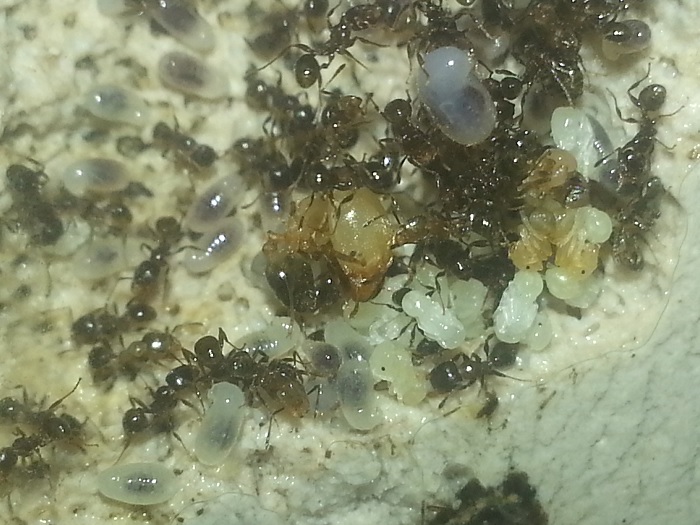
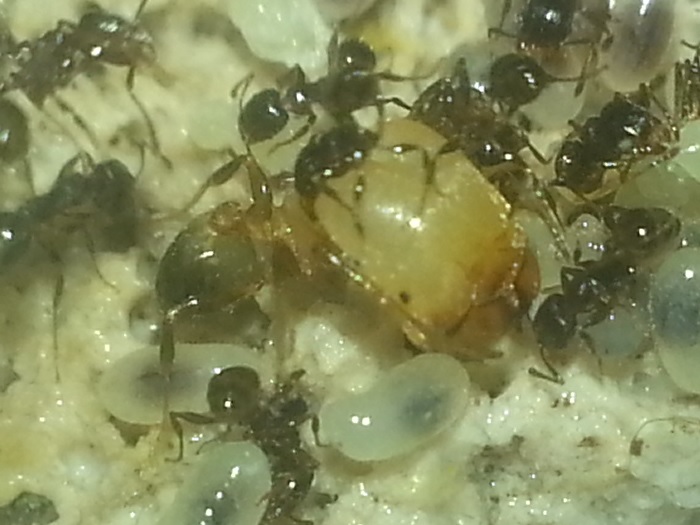
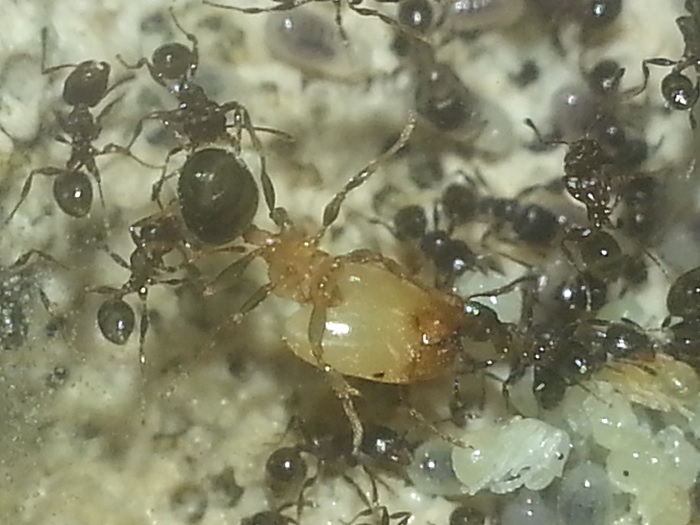
Edited by antmaniac, December 24 2015 - 8:35 PM.
29/12/2015
The major worker has become a bit darker now. She also moved to the chamber where used to be garbage dump. The ants have clean the chamber and removed all the garbage. Therefore it is still quite dirty on the glass and hard to take a clear photo.
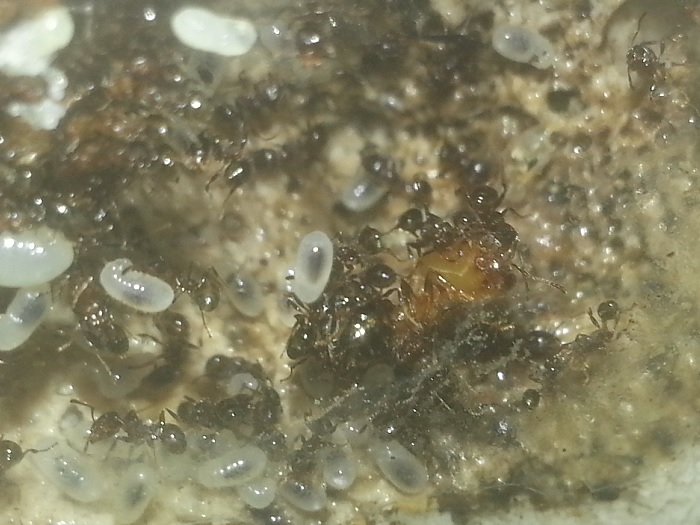
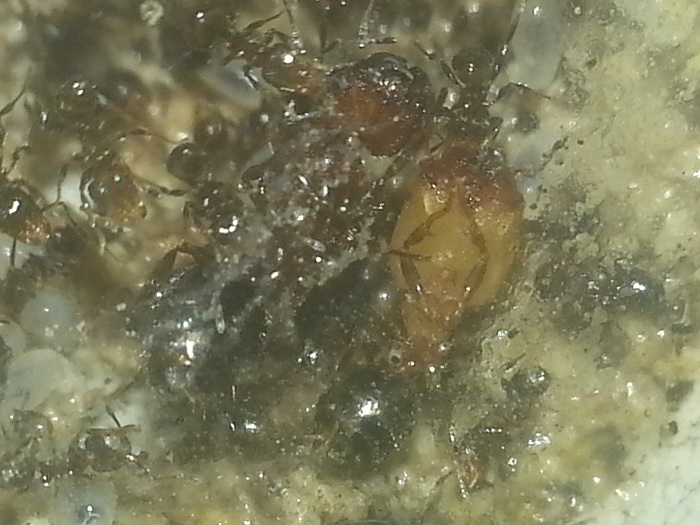
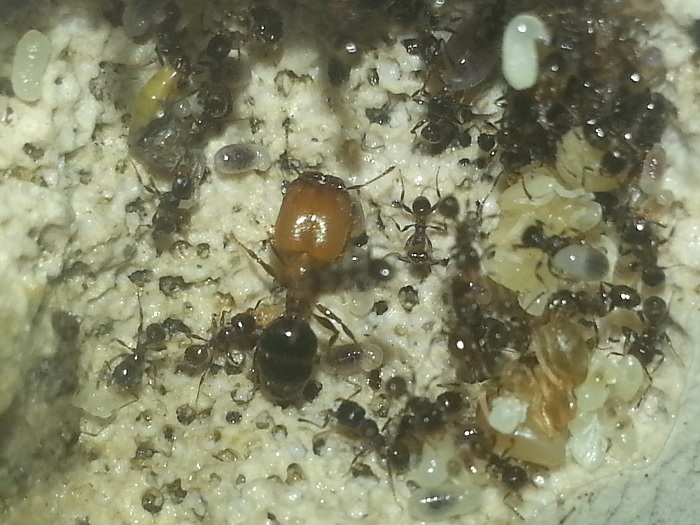
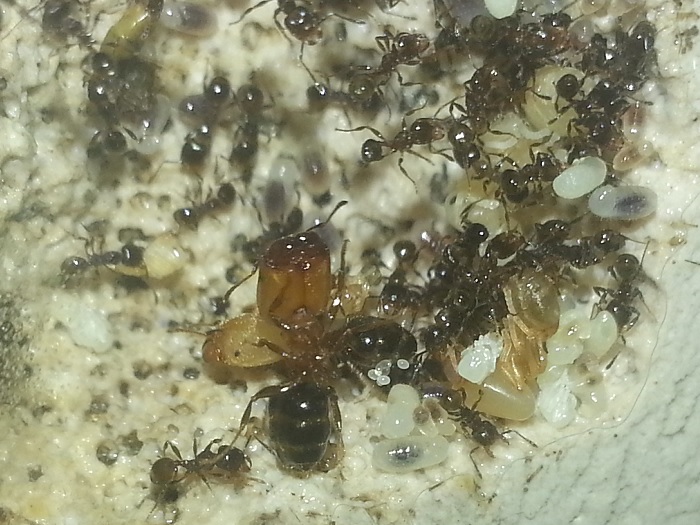
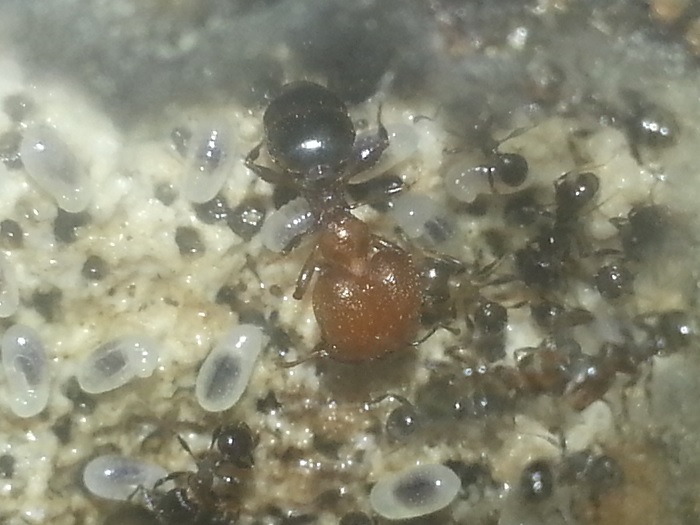
Edited by antmaniac, January 8 2016 - 3:44 PM.
8/1/2016
One of the alate queens has finally eclosed. The wings are well groomed and look after by the workers.
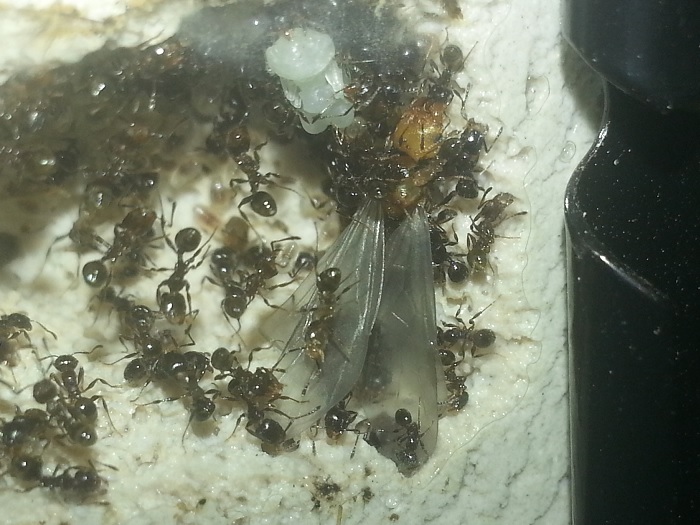
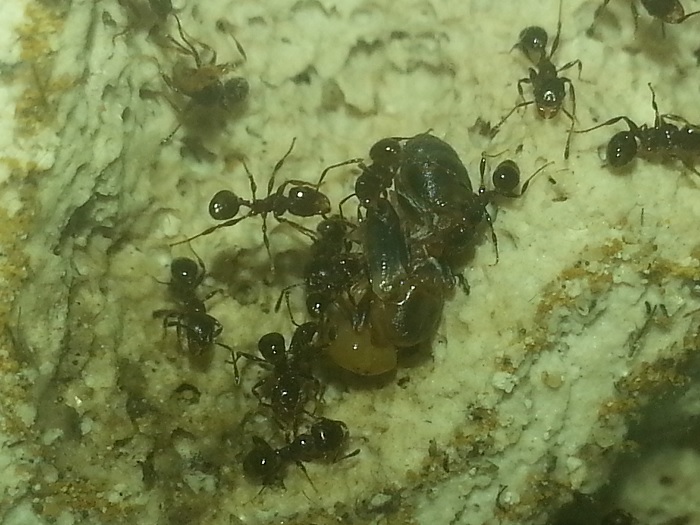
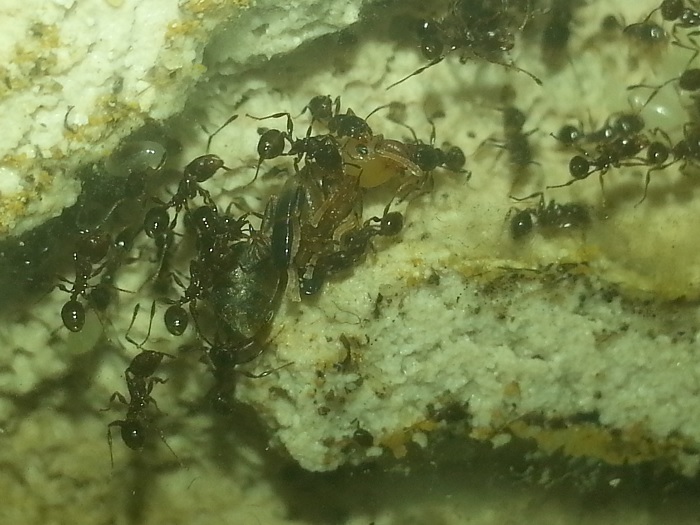
I wonder if this species mates within the nest?
Currently Keeping:
Trachymyrmex septentrionalis
Pheidole pilifera
Forelius sp. (Monogynous, bicolored) "Midwestern Forelius"
Crematogaster cerasi
Pheidole bicarinata
Aphaenogaster rudis
Camponotus chromaiodes
Formica sp. (microgena species)
Nylanderia cf. arenivega
Edited by antmaniac, January 9 2016 - 1:26 AM.
I know of species such as Tapinoma sessile that have nuptial flights and mate within the nest it is entirely possible.
Edited by Mdrogun, January 12 2016 - 4:26 PM.
Currently Keeping:
Trachymyrmex septentrionalis
Pheidole pilifera
Forelius sp. (Monogynous, bicolored) "Midwestern Forelius"
Crematogaster cerasi
Pheidole bicarinata
Aphaenogaster rudis
Camponotus chromaiodes
Formica sp. (microgena species)
Nylanderia cf. arenivega
I know of species such as Tapinoma sessile that have nuptial flights and mate within the nest it is entirely possible.
The thing is, this colony did not produce any drones, only alate queens. So my thought is, this colony is still young and with plentful food and resources, they make alate queens. When the colony get older, they start to produce drones and pass on the gene. This way they can share the survival of the gene globally, just my random thought on this phenomenon.
They could still produce drones. I agree they definitely have nuptial flights. I'm just saying they might breed in the nest because the colony is not at it's full grown size yet. This might indicate they are trying to speed up growth. Also other males could come from nearby colonies to mate in the wild.
Currently Keeping:
Trachymyrmex septentrionalis
Pheidole pilifera
Forelius sp. (Monogynous, bicolored) "Midwestern Forelius"
Crematogaster cerasi
Pheidole bicarinata
Aphaenogaster rudis
Camponotus chromaiodes
Formica sp. (microgena species)
Nylanderia cf. arenivega
They could still produce drones. I agree they definitely have nuptial flights. I'm just saying they might breed in the nest because the colony is not at it's full grown size yet. This might indicate they are trying to speed up growth. Also other males could come from nearby colonies to mate in the wild.
That could be the case too. Pheidole can have multiple queens in one colony indeed.
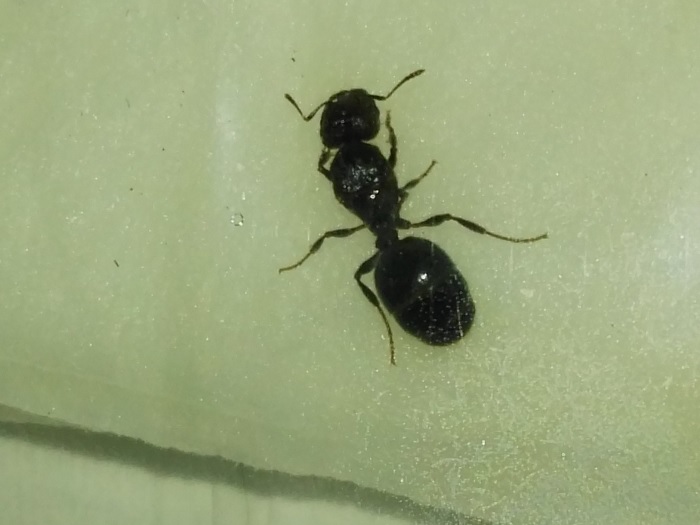
19/1/2016
The major worker has started her work, dealing with large difficult foods like seeds and insects. I have recorded her dissecting work in action.
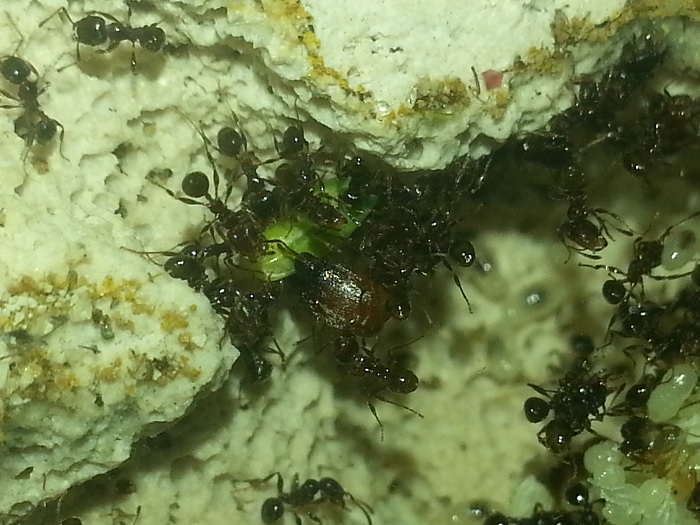
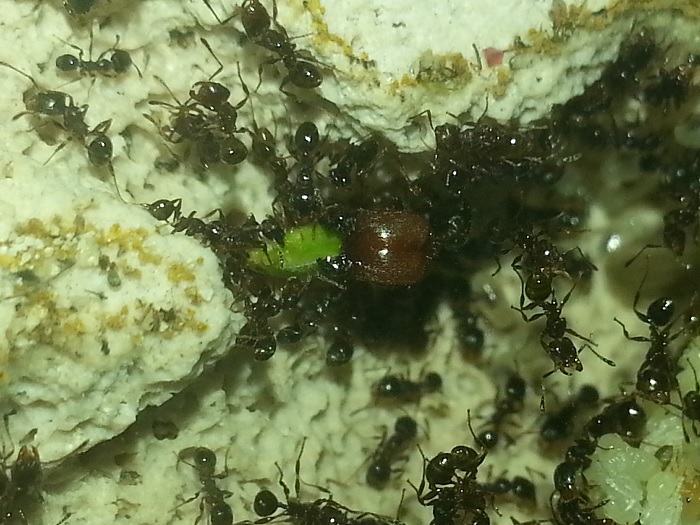
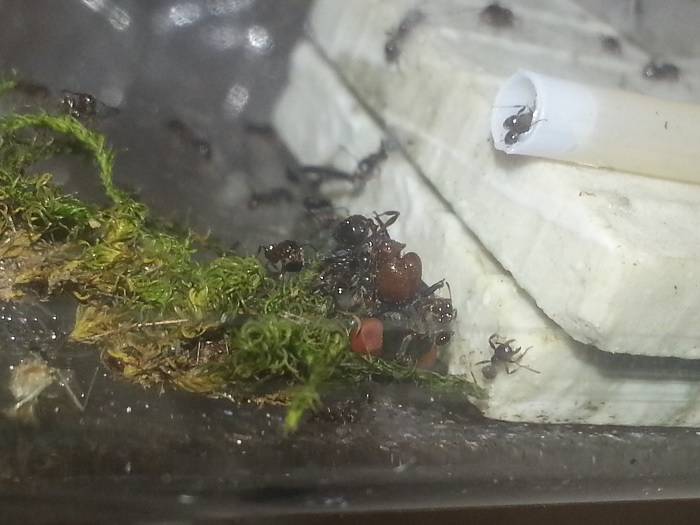
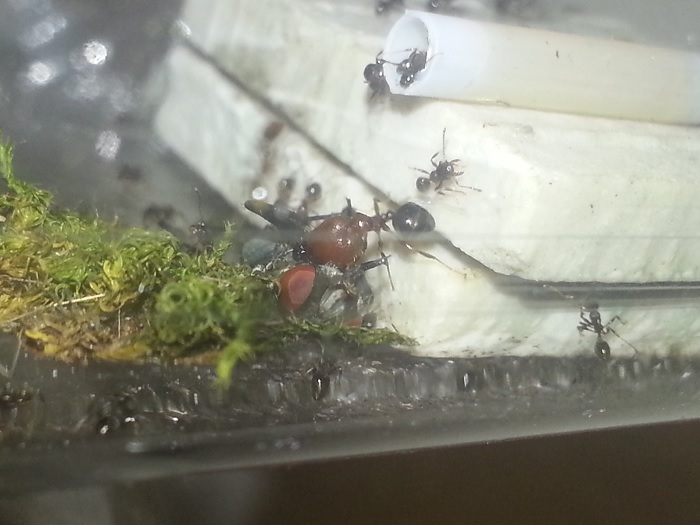
Great colony I love Pheidole
Thanks, yours is really nice too. The major in my colony only come out to help when the colony is low on food and has been hungry for few days. This way they will thoroughly process the food by cut up all the parts and feed to the larvae! When there are plenty of foods, the major will become lazy and just stay in the nest, carry out patrol, defense and storage jobs. The carcass will remain in the outworld.
6/2/2016
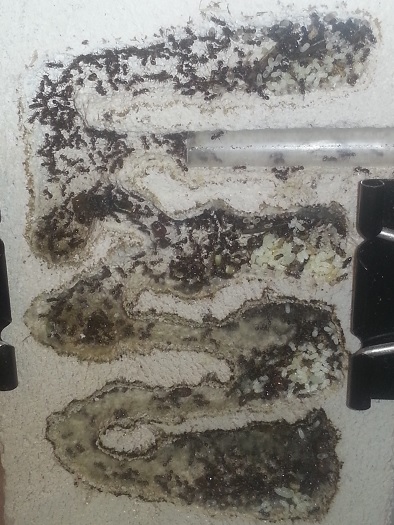
13/2/2016
Fed them some seeds, which I processed them first in order to avoid germination within the nest. They have stored all the seeds soon after.
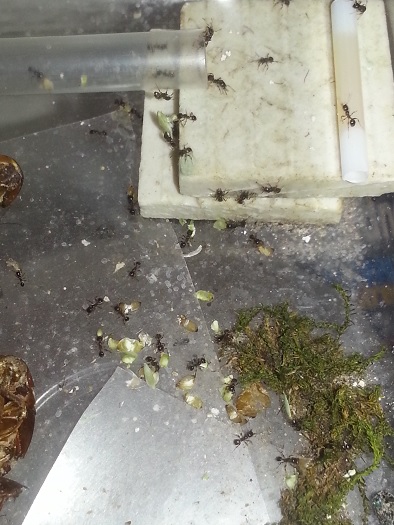
Edited by antmaniac, February 13 2016 - 6:57 PM.
12/2/2016
One wingless queen got dragged outside and get dissected by the workers. She could be the one of the virgin queens who shredded wings. Other possibility is the original queen died from old age, but I doubt that. I guess also partly due to the fact that I haven't feed them for a while now even though there is always honey available. The other virgin queens with wings still alive though.
14/2/2016
This morning I saw one of the virgin queens wandering out of the nest and appeared to be seeking to take off. Then she moved back to the nest afterward. I shined the led light into the nest to have a closer look. Surprisingly, this somehow trigger the nuptial flight again. So I quickly took some photos after removed the lid of the outworld. At one stage, she almost climbed all the way up to the top and the workers can be seen nibbling on her to encourage her. I tried to pick her up, but failed and ended up scared the queen back into the nest. Soon after, mass workers swarmed out to defend, so I had to leave them alone.
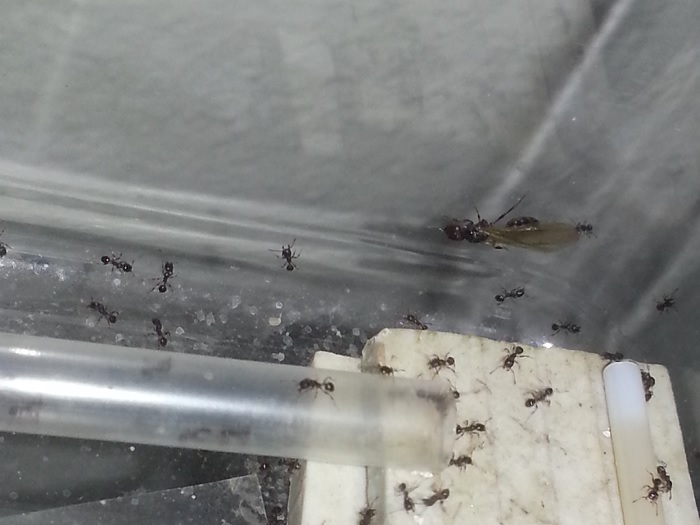
Edited by antmaniac, February 13 2016 - 7:17 PM.
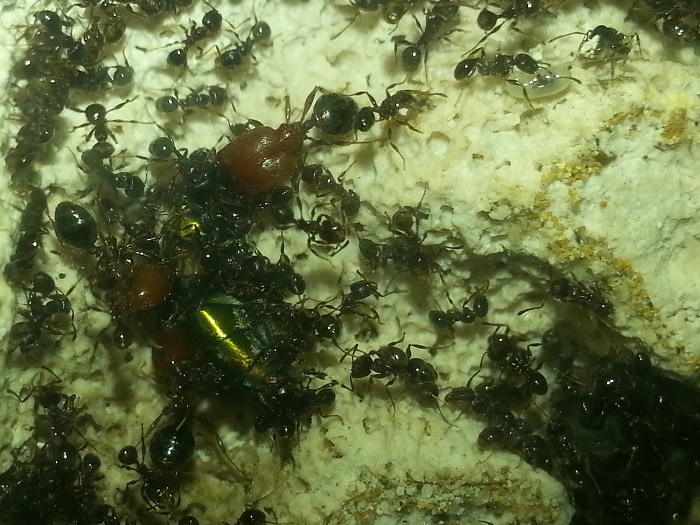
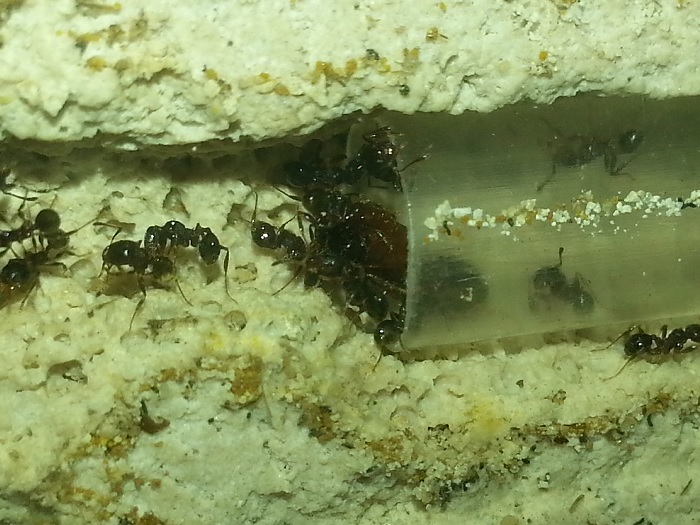
16/3/2016
Too dark, too crowded.
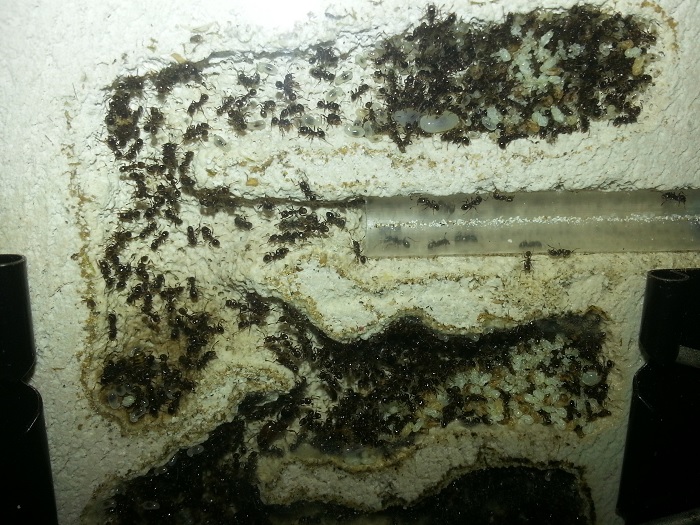
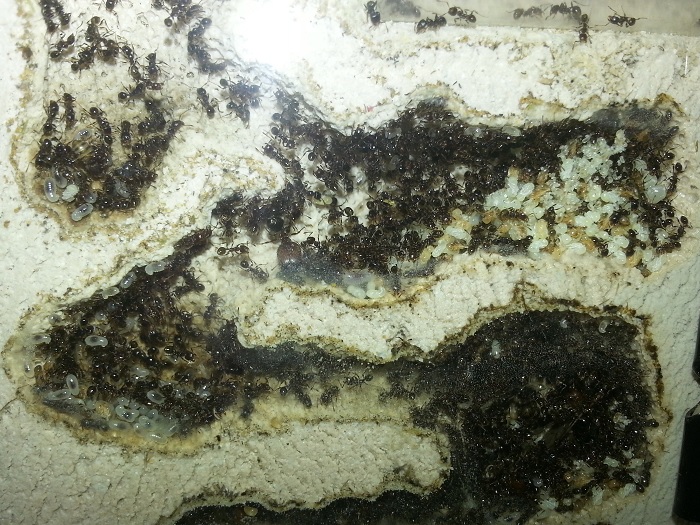
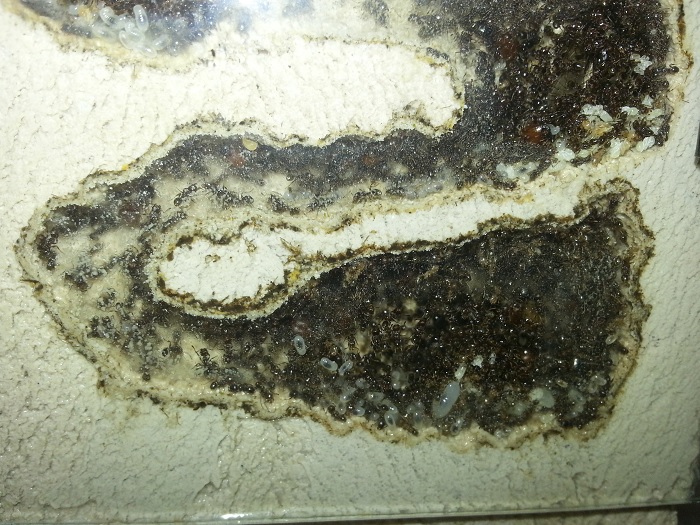
0 members, 1 guests, 0 anonymous users